This post was contributed by a community member. The views expressed here are the author's own.
Regain your creative spirit by reactivating the arts within you this Fall season through taking an art workshop held at Glen Echo Park via the Yellow Barn Studio, with acclaimed international artist, Vian Borchert who will offer a special one day workshop in Acrylic painting, and another one day workshop as well in ink within the month of November.
Workshop Title: "Landscape with Trees in Acrylic for all Levels"
On Saturday November 8
From 10AM - 1PM
At Glen Echo Park via the Yellow Barn Studio: 7300 Macarthur Blvd, Glen Echo, MD 20812
Description of the Workshop:
The class that is open for all levels of students will encompass working from a landscape with trees’ photo. Borchert, the instructor, will guide the students through demonstrating the steps needed to create a pleasing composition of a landscape painting in acrylic with emphasis on elements like perspective, depth, texture, and brush techniques.
The other workshop offering by Borchert will be in Ink.
Workshop Title: "Ink Exploration with Landscape for all Levels"
On Saturday November 15
From 10AM - 1PM
At Glen Echo Park via the Yellow Barn Studio: 7300 Macarthur Blvd, Glen Echo, MD 20812
Description of the Workshop:
In this workshop for all levels of students, the class will utilize inked pens to explore the beauty of line work and marks. A rendition from a master artist's ink landscape artwork will be recreated with a focus on structure and composition for creating skilled ink work.
Enrollment for the workshop is via this link:
https://reg126.imperisoft.com/...
Vian Borchert is an established artist, Corcoran George Washington University graduate and “Notable Alumni" with 2 decades of teaching experience. She is dedicated to art education and guiding her students to acquire the needed skills to create skillful artwork. He artwork has been on exhibit in museums and key galleries worldwide.
Borchert's artwork can be seen locally in galleries such as the Framer's Choice Gallery which has her as one of their permanent artists. Her solo exhibition titled "Electric" is currently ongoing at the gallery throughout October. Within the exhibition, visitors can see a large array of Borchert's iconic and signature abstract paintings from "Orange Woods" to the new watercolor series of the "Electric" collection that explore the relationship between vitality and vulnerability, using electricity as a metaphor for dual edged forces shaping both external worlds and internal states. The exhibition is currently ongoing at the gallery till Oct 31. Gallery Hours: Mon - Sat: 10AM-3PM. The Framer's Choice Gallery is located at: 402 Main St. North Potomac, MD 20878.
* Beyond Borchert's local showings, her abstract paintings are currently on view in the "Whispers in Form" exhibition at Sims Contemporary Gallery in Chelsea, NYC. The exhibition is ongoing till Nov 1. Sims Gallery is located just below the famous Highline in Chelsea at this address:
509 W 23rd St, New York, NY 10011 - Sims Gallery Hours: Tuesday - Saturday: 11AM - 5PM - More about this via this link:
Furthermore, happening this Weekend from Oct 17 - 19, Borchert was invited to be in the Paris Vernissage at the Carousel du Louvre in the famous Louvre museum in Paris, France - link: https://www.facebook.com/photo...

 301.263.6982
301.263.6982




 Service Areas
Service Areas























